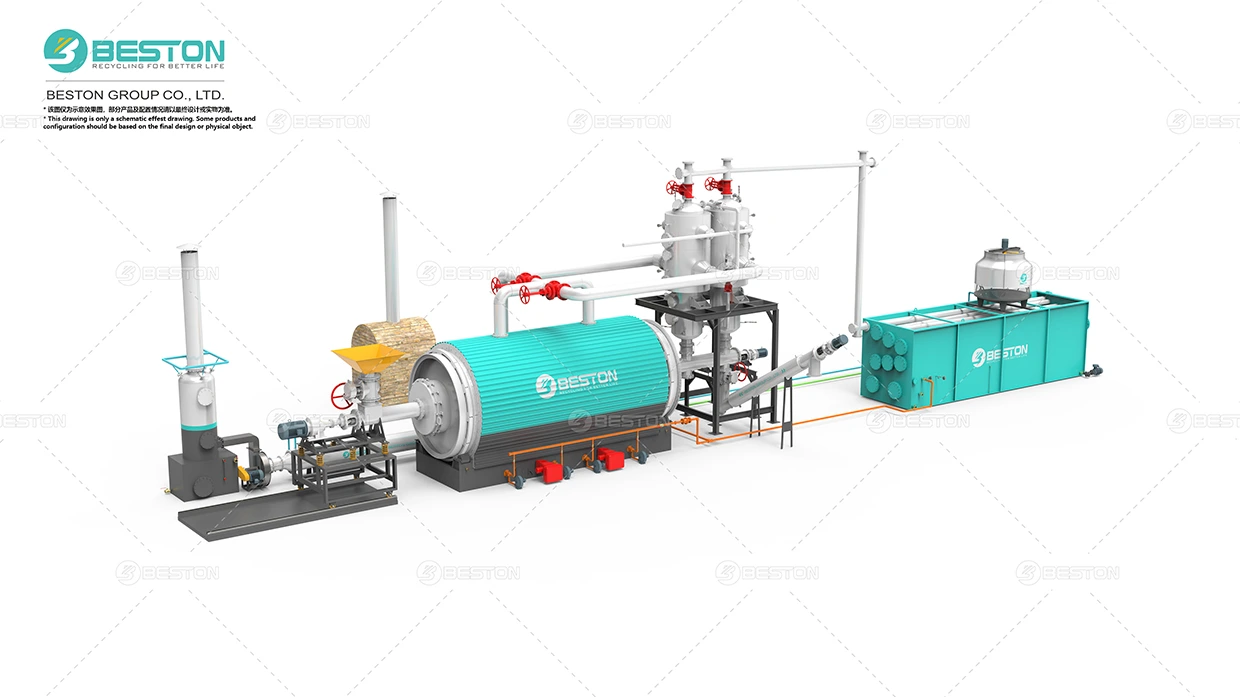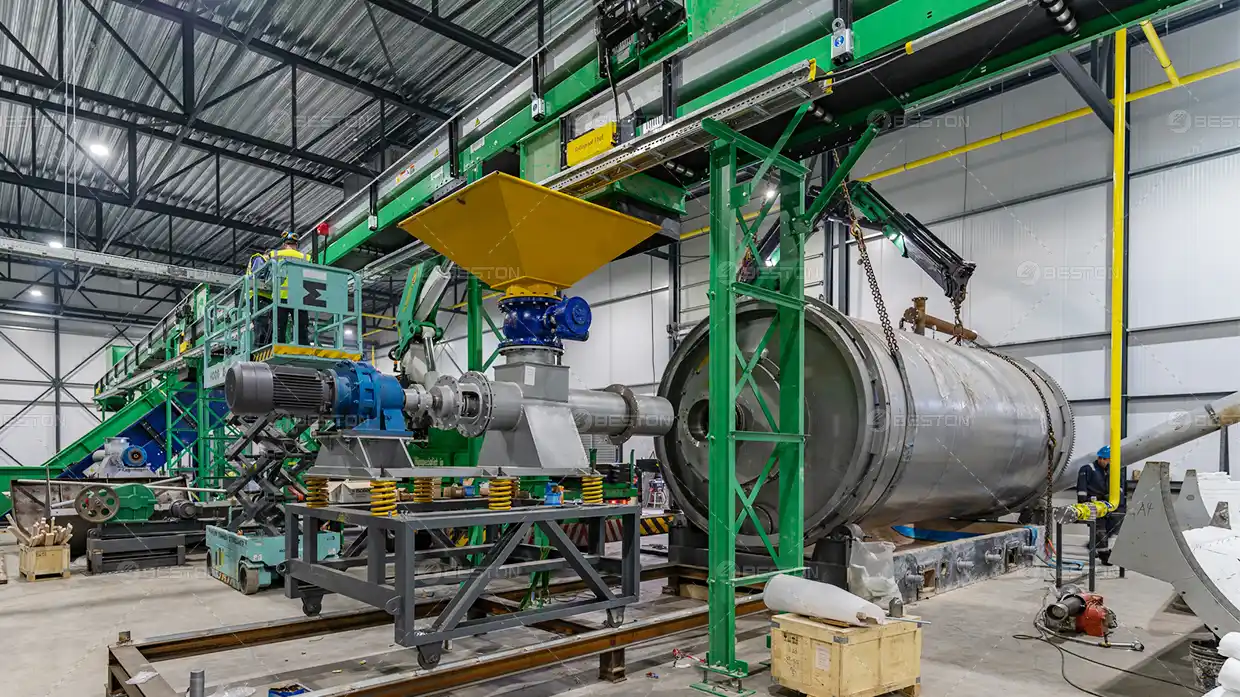The cost of a small plastic pyrolysis machine is influenced by a range of factors that can significantly impact the overall investment required. Understanding these factors is essential for anyone considering the acquisition of such equipment, as they determine both the upfront cost and the long-term operational efficiency. The following outlines the key determinants that shape the pricing of a small plastic pyrolysis machine.
1. Technology and Design Complexity
The complexity of the technology integrated into the small plastic pyrolysis machine is a primary determinant of cost. Machines equipped with advanced features, such as automated feed systems, enhanced safety mechanisms, and digital control interfaces, typically command higher prices. These technological enhancements streamline operations, reduce labor requirements, and minimize human error, but they also contribute to increased manufacturing costs. Additionally, the design intricacies, including the precision of components and the integration of cutting-edge materials, can further drive up the price. The more sophisticated the machine’s design, the greater the cost, as these innovations necessitate specialized engineering and testing.
2. Production Capacity
The production capacity of a small plastic pyrolysis machine is another significant factor influencing its cost. Machines with higher throughput capabilities are generally more expensive due to the increased size of reactors, the need for more robust heating systems, and the incorporation of efficient cooling mechanisms. While larger machines are often seen as more cost-effective in the long term due to economies of scale, they require a higher initial investment. Conversely, smaller machines with limited capacity are more affordable but may lead to higher per-unit processing costs, especially when handling large volumes of plastic waste.
3. Material and Build Quality
The quality of materials used in constructing a small plastic pyrolysis machine is crucial in determining plastic pyrolysis plant cost. High-grade stainless steel, for instance, offers superior resistance to corrosion and high temperatures, which is essential for the pyrolysis process. However, using such materials increases the manufacturing costs, which are reflected in the final price of the machine. Additionally, the build quality, including the precision of welding, the robustness of seals, and the durability of moving parts, plays a significant role in the machine’s longevity and maintenance costs. Machines built with premium materials and meticulous craftsmanship are more expensive but offer a longer service life and reduced downtime.
4. Energy Efficiency
Energy efficiency is a critical factor in the operational cost of a small plastic pyrolysis machine and also affects its purchase price. Machines designed to optimize energy consumption through innovative heating methods, such as indirect heating or the use of secondary heat sources, tend to be more expensive. These machines, however, offer lower operating costs over time, making them a more cost-effective option for businesses aiming for long-term sustainability. The inclusion of energy recovery systems, which capture and reuse heat, further adds to the cost but significantly enhances the machine’s overall efficiency and environmental impact.

5. Customization and Optional Features
Customization options and additional features can substantially influence the cost of a small plastic pyrolysis machine. Standard models are generally more affordable, but they may not meet the specific needs of all users. Customizations such as tailored reactor sizes, specialized feed systems, or integrated emission control systems add to the initial cost but provide greater operational flexibility and compliance with environmental regulations. Optional features like automated controls, enhanced safety systems, and advanced monitoring tools also contribute to higher prices. The level of customization required depends on the specific application and desired output, with more complex configurations driving up the cost.
6. Geographic Location and Import Tariffs
The geographic location of the manufacturer and buyer can affect the cost of a small plastic pyrolysis machine due to variations in labor costs, material availability, and transportation expenses. Machines produced in regions with lower labor costs may be more affordable, but import tariffs, shipping fees, and potential delays can offset these savings. Additionally, local regulations, such as environmental standards and safety requirements, may necessitate further modifications or certifications, increasing the overall cost. Buyers must consider these geographic factors when evaluating the total investment required for acquiring a pyrolysis machine.
7. After-Sales Support and Warranty
The level of after-sales support and the warranty offered by the manufacturer also impact the cost of a small plastic pyrolysis machine. Comprehensive support packages, which include installation, training, and ongoing maintenance services, typically come at a premium. However, these services ensure the machine operates efficiently and reduces the likelihood of costly breakdowns. A robust warranty, covering key components and providing long-term protection, also adds to the initial cost but offers peace of mind and financial security in case of defects or malfunctions. The availability and quality of after-sales support can vary significantly between manufacturers, making it a critical factor in the overall cost assessment. Welcome to consult with Beston Group: https://bestonmachinery.com/

8. Market Demand and Supply Chain Factors
Market demand and supply chain dynamics can also influence the cost of a small plastic pyrolysis machine. High demand for these machines, driven by increasing plastic waste management needs, can lead to price fluctuations. Similarly, disruptions in the supply chain, such as material shortages or logistical challenges, can result in price increases. Manufacturers may also adjust prices based on competition and the availability of alternative technologies. Buyers should be aware of these market factors and consider timing their purchase to take advantage of favorable conditions.
Conclusion
The cost of a small plastic pyrolysis machine is influenced by a multitude of factors, ranging from technology and design complexity to market demand and geographic considerations. Understanding these variables allows potential buyers to make informed decisions, balancing the initial investment with long-term operational benefits. Each factor plays a pivotal role in shaping the final price, making it essential for buyers to carefully evaluate their specific needs and priorities before purchasing.